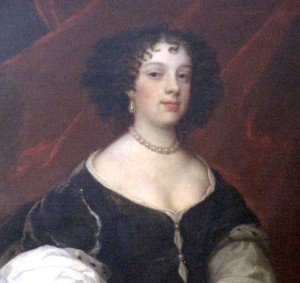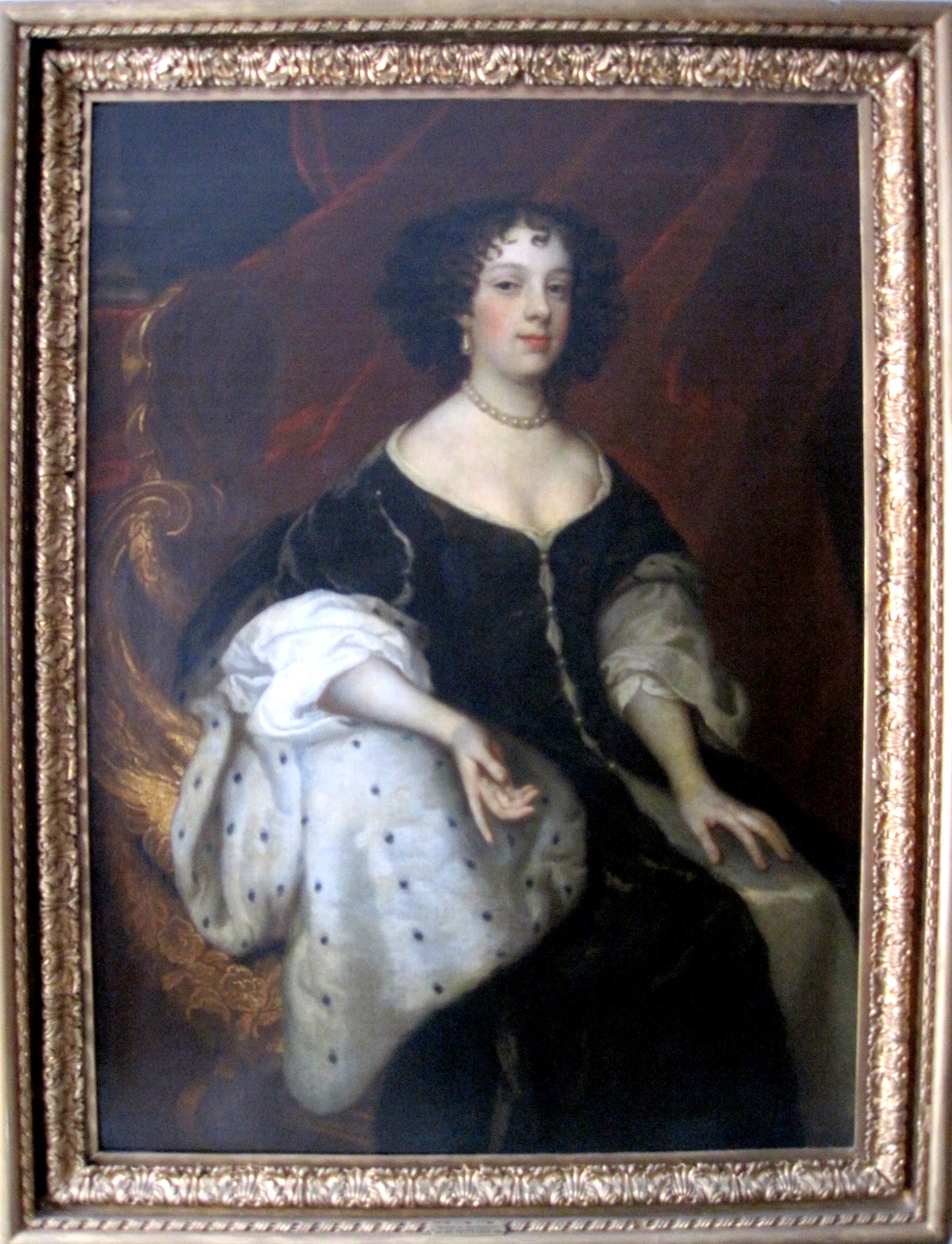
For reservations to experience “nkwiluntàmën: I long for it; I am lonesome for it (such as the sound of a drum)” by Indigenous artist Nathan Young, please go to https://nkwiluntamen.com/
January Collections Featurette
- January 7, 2011
- Posted By: Pennsbury Manor
Portrait of Catherine of Braganza
I’ve always loved the portrait of Queen Catherine by Peter Lely in the great hall. The dignity and serene expression of her face and the sumptuous clothing suggest a Queen who is leading a life of luxury and position. Nothing could be further from the truth! Poor Catherine had a difficult life filled with disappointment and ridicule. Yet she rose above it all and is seen by historians as a valiant and resilient woman.
Catherine of Branganza was born in 1638, the daughter of the King of Portugal. At the time, Portugal was a poor nation living in the shadow of Spain. Because an alliance with England would bolster Portugal’s security, they began marriage negotiations between Catherine and England’s future King Charles II when she was a child. The English Civil War and subsequent reign of Proprietor Cornwell put these plans on hold, but negotiations resumed with restoration of Charles and they were married in 1662.
From the beginning, there were problems with the union. Catherine had been raised in a convent and was deeply religious. (The terms of her marriage included freedom to practice her Catholic faith without persecution.) Charles, on the other hand, was famously known as one of the most “immoderate” of monarchs. Catherine was horrified by the debauchery of court. Right away, Catherine was forced to face the power and influence of her husband’s mistresses. Lady Castlemaine, the King’s chief mistress, was to serve the new Queen as a “Lady of the Bedchamber,” giving Castlemaine free access to the Queen in all parts of her life. The ensuing battle between the royal couple lasted several months and was extremely heated. One witness in court recorded a confrontation between the pair, and “the passion and noise of the night reached too many ears to be a secret the next day; and the whole Court was full of that, which ought to have been known to nobody.”

After Charles II died, Catherine remained in England for several years. She returned to Portugal in 1692 and, at age 66, acted as regent (ruling monarch) for her brother. As regent, she gained several successes over the Spanish. She died a wealthy and popular woman. But the legacy of her bitter years will always follow her and can be seen even today at Pennsbury. Look closely at the plaque on her portrait. The Queen’s portrait is identified as the Duchess of Portsmouth – one of Charles’ most famous mistresses.
by Mary Ellyn Kunz
